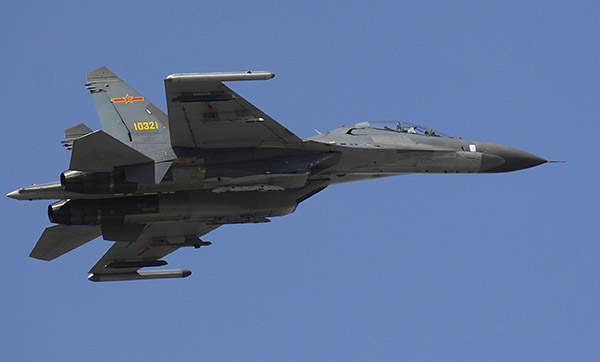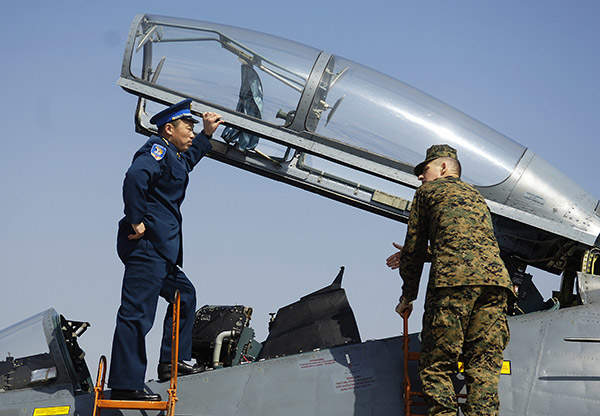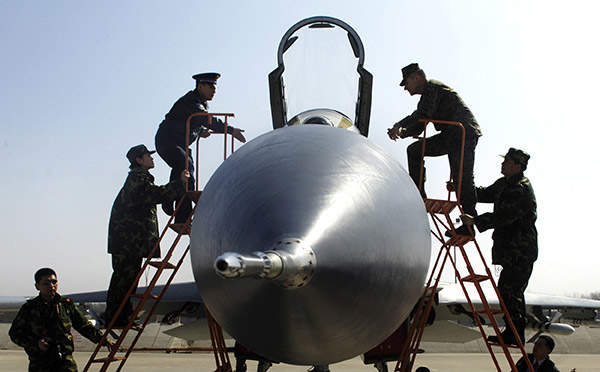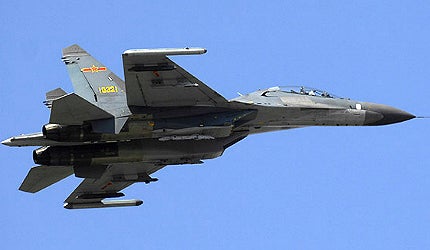Shenyang J-11, or Jian-11, is a Chinese multirole fighter aircraft manufactured by Shenyang Aircraft Corporation (SAC). It is a licensed-built variant of the Sukhoi Su-27SK (Nato code name: Flanker) fighter. The J-11 is operated by the People’s Liberation Army Air Force (PLAAF).
Shenyang J-11 is a highly-manoeuvrable fighter aircraft capable of conducting air-superiority and ground attack missions.
Sukhoi and SAC signed a $2.5bn contract for the co-production of 200 Su-27SK fighters as the J-11 in February 1996. As part of this contract, Sukhoi was responsible for supplying components to assemble the aircraft at SAC.
Development of the Shenyang J-11
The first aircraft assembled in Shenyang was flight tested in December 1998. Full-scale production was delayed because of technical issues.
About 100 aircraft were manufactured by 2003. Production ceased subsequently, as the basic J-11 variant did not meet the PLAAF requirements.
Sukhoi offered its Su-27SKM fighter to China in 2003. It was a modernised multirole variant based on the Su-27SK. The PLAAF rejected the aircraft in favour of a domestic variant of the J-11.
SAC unveiled a mock-up J-11B aircraft in 2002. It is an upgraded multirole variant of the J-11. The company delivered the first test aircraft to the China Flight Test Establishment (CFTE) for evaluation in 2006.
Design of the multirole fighter aircraft
Designed based on the Su-27SK, the airframe of J-11 is made of titanium and aluminium alloys. The fuselage section integrates the cockpit, radar sections and avionics bay. The basic J-11 version incorporates Russian-made components. The indigenously built J-11B uses the same airframe and is equipped with Chinese-built avionics and weapon systems.
The J-11 has a length of 21.9m, wingspan of 14.7m and a height of 5.9m. The wing area of the aircraft is 62m². The aircraft has a maximum take-off weight of 33,000kg.
Shenyang J-11 cockpit and avionics
The glass cockpit of J-11 accommodates a single pilot. It is equipped with colour multifunctional displays (MFDs), a head-up display (HUD), helmet-mounted sight (HMS) and an indigenous digital flight-control system.
The avionics suite integrates an IFF system interrogator, attitude and heading reference system, automatic direction finder, electro-optic search and tracking system, INS/GPS navigation system, fire control radar and indigenous multifunctional pulse-Doppler radar. The onboard automatic monitoring system includes an early warning system, flight information recording system and emergency situation warning equipment.
Armament and weapons on the Chinese aircraft
The aircraft is armed with a 30mm GSh-30-1 cannon. The ten hard points provided on the aircraft are capable of carrying wide range of missiles, including PL-12 radar-guided air-to-air missile, PL-9 short-range, infrared-homing air-to-air missile (AAM), PL-8 air-to-air missile, Vympel R-77 medium range air-to-air missile, Vympel R-27 medium-to-long-range air-to-air missile and Vympel R-73 short-range air-to-air missile.
The PL-12 carries a high explosive fragmentation warhead for a maximum range of 100km. The aircraft also carries an unguided rocket launcher and free-fall cluster bombs.
Countermeasures, engines and performance
The electronic countermeasures equipment aboard the J-11 include radar warning receiver, chaff and flare dispensing system and radio jamming transmitter.
The J-11 is powered by two Lyulka AL-31F or FWS-10A Taihang turbofan engines. Each engine is capable of developing a dry thrust of 75.22kN / 89.17kN and afterburner thrust of 123kN / 132kN.
The FWS-10A TaiHang turbofan engine was unveiled during the 6th Zhuhai Air Show in 2006. The engine is believed to be similar to the Russian-made AL-31F turbofan engine in terms of technology and performance.
The aircraft can fly at a maximum altitude of 19,000m. It has a rate of climb of 300m/s.
The J-11 has a maximum speed of Mach 2.35 and a range of 3,530km. The maximum flight speed at sea level without external weapons and stores is 1,400km/h.
The Global Military Aircraft Market 2011-2021
This project forms part of our recent analysis and forecasts of the global military aircraft market available from our business information platform Strategic Defence Intelligence. For more information click here or contact us: EMEA: +44 20 7936 6783; Americas: +1 415 439 4914; Asia Pacific: +61 2 9947 9709 or via email.
Related content
J-10 (Jian 10) Vigorous Dragon Multirole Tactical Fighter, China
The J-10 (Jian 10 or Fighter 10) is China’s indigenously built multirole fighter aircraft developed by the Chengdu Aircraft Industry.
Chengdu J-20 Multirole Stealth Fighter Aircraft, China
A single-seat, multirole stealth fighter aircraft, the Chengdu J-20 is manufactured by Chengdu Aircraft Industry Group (CAIG) of China.





